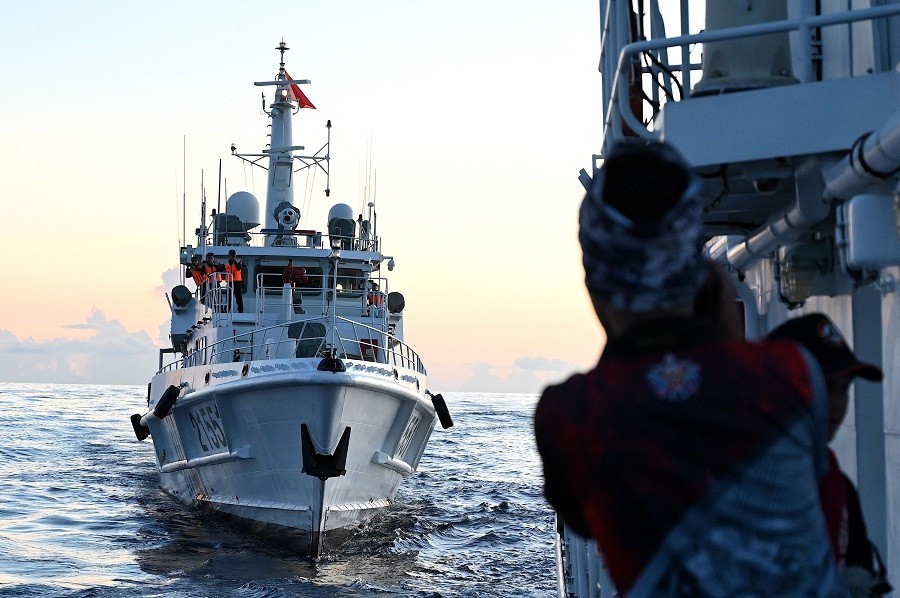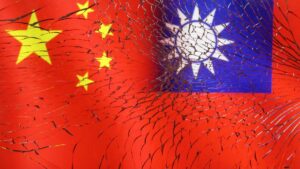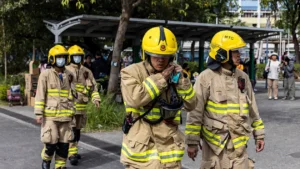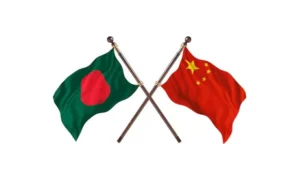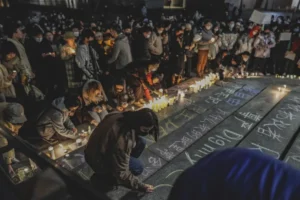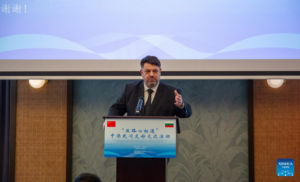Philippines’ Bold Response To Aggressive China In The South China Sea
The Philippines, under President Ferdinand Marcos Jr., has approved a major military upgrade including its first submarine, aiming to bolster its maritime defences in the disputed South China Sea, according to a report published in South China Morning Post on February 01. This shift towards external defence reflects growing tensions with China, which recently claimed to have driven off Filipino fishermen from a contested shoal. Four Filipinos were recently forced away from a contested area in the South China Sea, known as Scarborough Shoal, by the Chinese coastguard. This event marks the latest clash between the two countries over access to the region’s valuable fishing grounds. The Chinese coastguard claims the Filipinos entered the shoal illegally on Sunday, but hasn’t confirmed if they were on a fishing vessel.
China’s coastguard earlier announced, according to a report published in the South China Morning Express on 28 January, 2024, that they had allowed the Philippines to deliver supplies to their troops stationed on a grounded World War II vessel near a disputed reef. This came after earlier attempts by the Philippines to deliver supplies were blocked by Chinese vessels. This particular reef, known as Second Thomas Shoal in the Philippines and Renai Reef in China, sits roughly 190km off the Philippine coast and has become a small military outpost. While China emphasized these arrangements are temporary, it highlights a potential shift in tensions surrounding the contested South China Sea region.
Tensions have been simmering in the South China Sea for months as China ramps up pressure on the Philippines. A small Philippine military outpost stationed on Second Thomas Shoal, a disputed territory within the sea, is at the centre of this series of activities. China has been actively interfering with this garrison, making it increasingly difficult for them to receive supplies and operate freely. This growing pressure raises concerns about a potential escalation in the region.
The Philippine marines stationed on a WWII-era landing ship face a tense situation. They rely on regular deliveries of food and water from the main Philippine islands, but Chinese Coast Guard vessels and fishing boats frequently try to block these supplies, essentially attempting to cut off the tiny outpost. Recent incidents show escalating tactics, with the Chinese using water cannons to disable a resupply vessel and dangerous manoeuvres that caused a collision. These actions represent a calculated application of “grey zone” and “hybrid warfare” strategies. By employing the Coast Guard and seemingly civilian fishing boats (though likely part of China’s maritime militia), Beijing aims to obfuscate its intervention and avoid portraying it as direct military action. This raises concerns about China’s intentions and the growing pressure faced by the Philippine marines on their isolated outpost.
The South China Sea is a region rich in resources and strategically important. China’s expansive claims over the South China Sea, fuelled by the potential riches of untapped oil and gas reserves, have created friction with neighbouring countries. Brunei, Indonesia, Malaysia, the Philippines, Taiwan, and Vietnam all have competing claims to islands and maritime zones, particularly the resource-rich Spratly Islands.China argues that international law prohibits foreign military activities like reconnaissance flights within its exclusive economic zone (EEZ). However, the United States and other claimant countries point to the UN Convention of the Law of the Sea (UNCLOS), which guarantees freedom of navigation within EEZs and doesn’t require notifying coastal nations of military activities. In 2016, an arbitration tribunal under UNCLOS ruled largely in favour of the Philippines in a case against China, but China rejected the ruling and its authority.
Satellite images reveal China’s ongoing efforts to bolster its territorial presence through land reclamation projects, creating new islands and expanding existing ones. These outposts often house military installations, ports, and airstrips, raising concerns about militarization. China’s deployment of fighter jets, missiles, and radar systems on Woody Island further escalates tensions in the region. The competing claims and military buildup in the South China Sea pose a significant geopolitical challenge, with the potential to disrupt regional stability and freedom of navigation in crucial shipping lanes.
The Philippines plans to upgrade nine outposts in the area, including installing a desalination plant on Second Thomas Shoal. This aims to improve living conditions for troops and reduce the need for resupply missions. However, China considers this a violation of the status quo and impedes access to the Sierra Madre for any improvements beyond basic supplies. Experts suggest various solutions, like replacing the Sierra Madre with a more permanent structure or establishing a joint Philippine-US base, but these options risk escalating tensions with China.
Philippine President Ferdinand Marcos Jr. has responded with a firm stance, boosting the country’s defences, and strengthening military ties with the US, Japan, and Australia. Experts are concerned that the “long-standing distrust” between China and the Philippines, fuelled by their contrasting political systems (democracy vs. authoritarianism), could worsen tensions in the South China Sea following their recent exchange of criticisms. This fear is further amplified by the Philippines’ growing network of military alliances with various countries, including Australia, Canada, France, Japan, South Korea, the United Kingdom, and the United States. Recent agreements, like the troop pact potential with Canada and the defence cooperation MOU with Britain, highlight this trend of bolstering external partnerships. The Philippine military is developing infrastructure on Philippine-controlled islands and reefs in the Spratly chain and even brainstorming new strategies to address the situation. These bold moves signal a determination to address the territorial disputes with China head-on.
This newfound assertiveness may be encouraged by assurances from the U.S. that their mutual defence treaty covers any armed attacks on their forces in the South China Sea. In a clear statement, the US Department of State confirmed on December 10, 2023, that the existing mutual defence treaty with the Philippines covers any armed attack on Filipino forces, ships, or aeroplanes, including Coast Guard vessels, across the entire South China Sea. This means that if such an attack were to occur, the United States would be obligated to come to the Philippines’ defence according to the terms of the 1951 treaty. This statement clarifies the US position on the scope of the agreement and potentially increases security concerns in the disputed region.
Since the December 10 statement has not led to de-escalation, USA may be considering three other options, according to experts. The first is tostrengthen the response to Houthi attacks in the Red Sea. While China isn’t directly involved, they’re watching US actions globally. A weak response to attacks on US ships could be misinterpreted as weakness and embolden China. Another option is to explicitly support the Philippines in their dispute with China over Second Thomas Shoal bysending US Coast Guard cutters to patrol alongside Philippine vessels, demonstrating resolve without military escalation. This counters China’s “legal warfare” tactics. A third option is to mirror US support for Japan in its Senkaku Islands dispute with China. While not taking a sovereignty stance, the US may clarify that the US-Philippine Mutual Defence Treaty applies to “administrative control” areas. This deters unilateral Chinese actions and assures the Philippines of US backing.
However, according to latest reports, military analysts believe the US sending a high-ranking delegation to the upcoming Western Pacific Naval Symposium at Qingdao, China, could significantly improve communication between the two militaries. This event, the first hosted by China in 10 years, comes amid heightened tensions in the region. While the US is unlikely to send its top officials, analysts predict a “relatively high” delegation, reflecting the recent restoration of military talks after a hiatus. This follows a working group meeting in January where 70 officials from Pacific nations discussed updating rules for safe encounters at sea. The US previously sent a mid-level delegation to a similar China-hosted forum in November, with limited interaction between officials. However, following a recent agreement between President Xi and Biden, both militaries have restarted engagements, including resuming an annual meeting that was paused since 2021.
In conclusion, the Philippines’ bold response to China’s aggressive actions in the South China Sea, marked by a significant military upgrade and strategic alliances, underscores the nation’s determination to protect its sovereignty. The escalating tensions, fuelled by China’s interference with Philippine outposts, satellite imagery revealing militarization, and the Philippines’ assertive infrastructure development, present a complex geopolitical challenge. President Ferdinand Marcos Jr.’s firm stance and the reinforcement of military ties with the US, Japan, and Australia demonstrate a commitment to addressing territorial disputes head-on. The potential involvement of the US further amplifies the gravity of the situation, reflecting the intricate dynamics in the region amid heightened security concerns.
